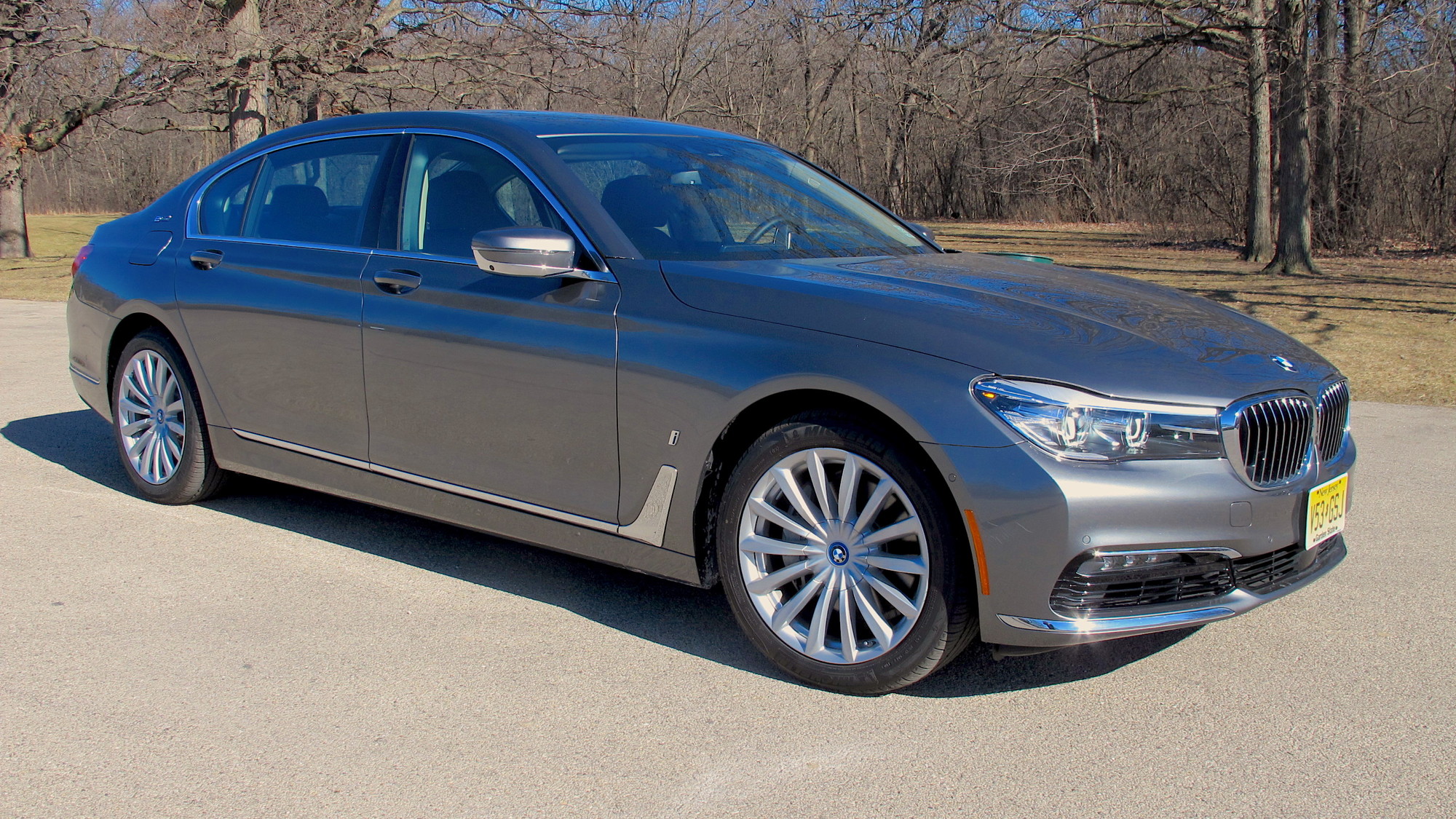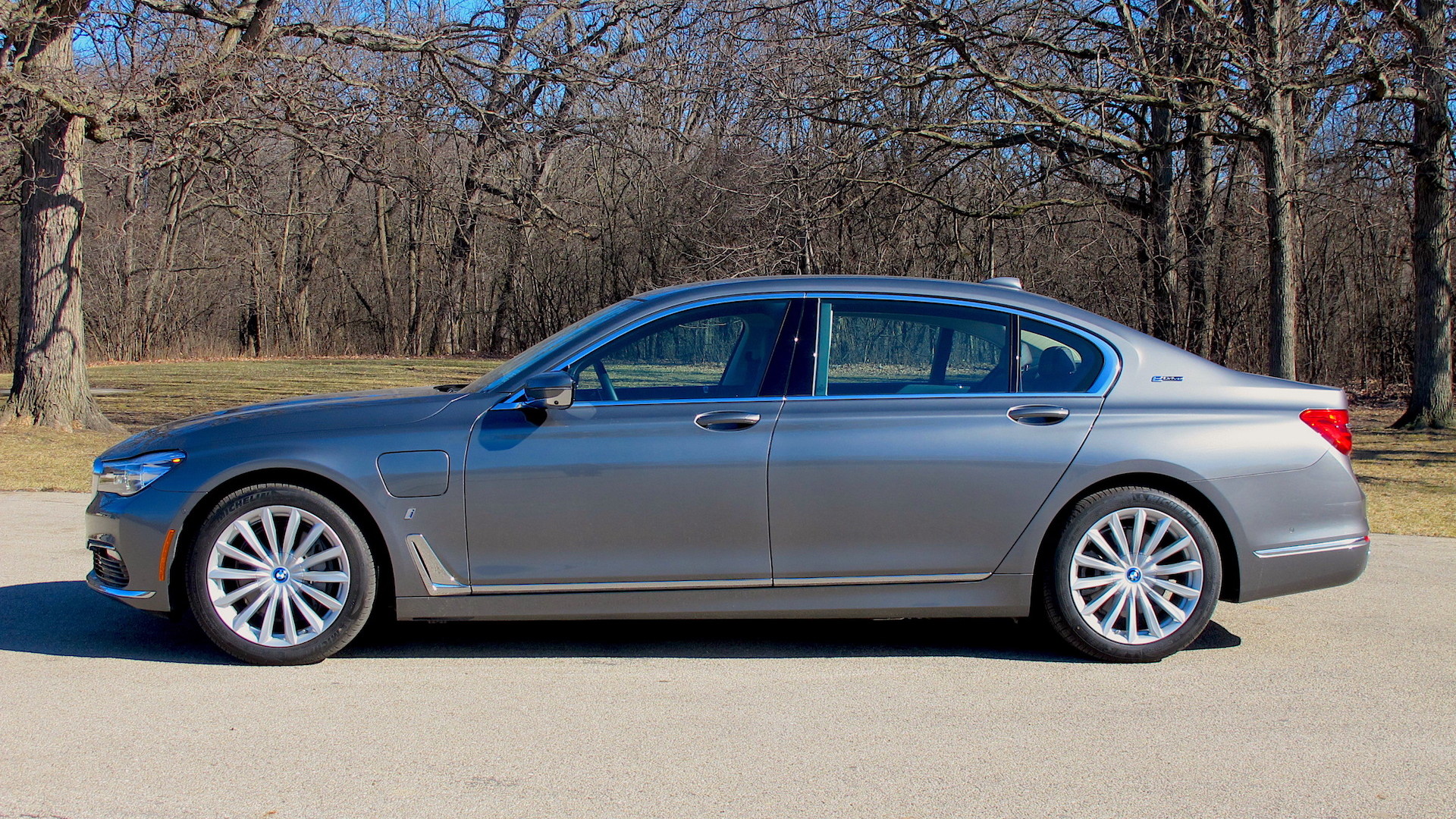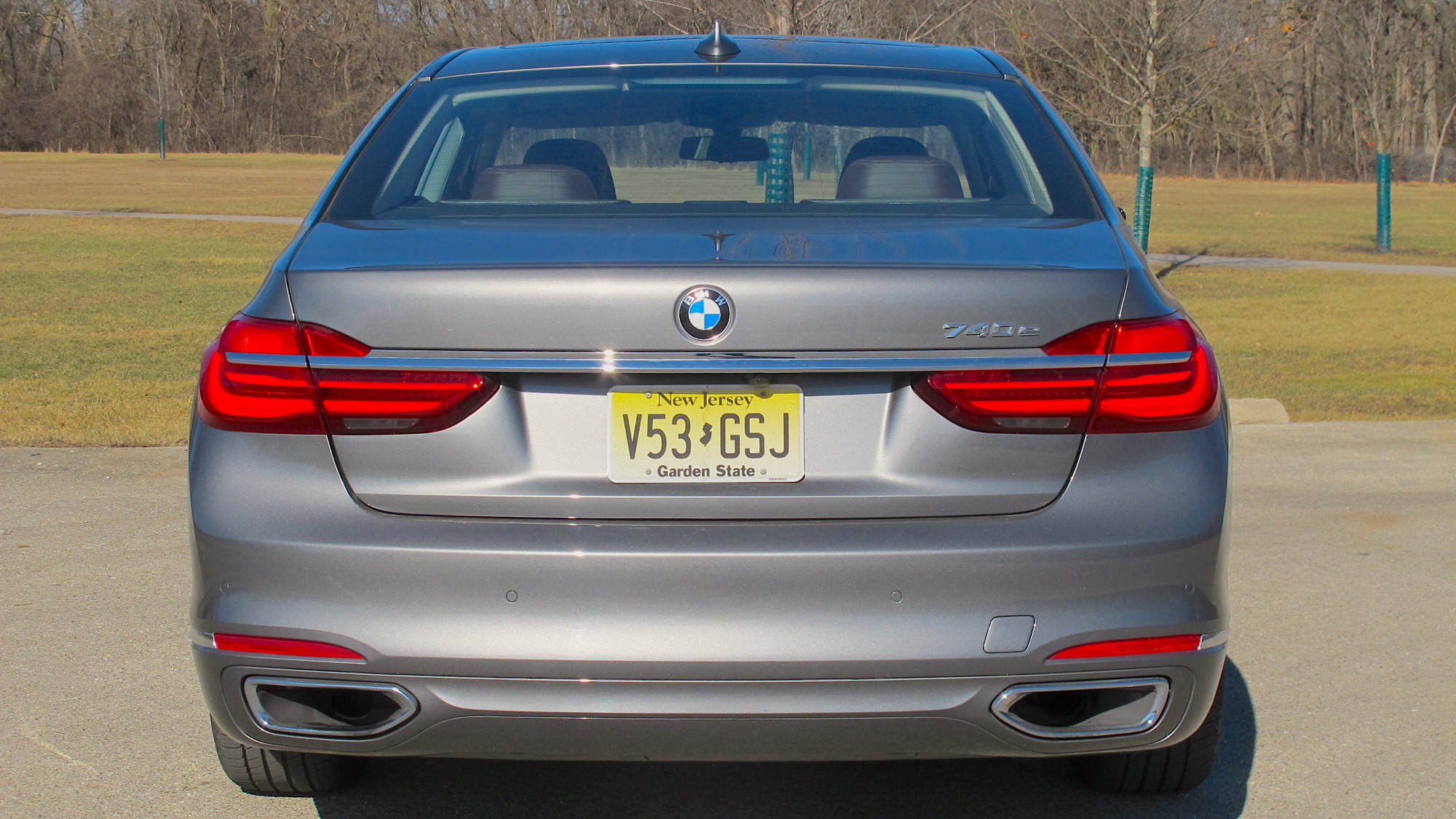More than a year ago, we spent a weekend with a 2016 BMW X5 xDrive 40e luxury plug-in hybrid SUV.
Rated at 14 miles of range, it never achieved anything near that number in winter weather.
Now our colleague Kirk Bell has driven a 2017 BMW 740e plug-in hybrid luxury sedan that uses the same powertrain.
DON'T MISS: 2017 BMW 740e xDrive iPerformance first drive review
He came away baffled—whereas we never completed a somewhat lukewarm writeup at the time.
Now, our two sets of drive reactions have prompted some thinking on the role of plug-in hybrid luxury cars with minimal electric ranges (under 20 miles).
And there are a lot of them, including entries from Audi (A3 e-tron); BMW (330e, 740e, X5 xDrive 40e); Mercedes-Benz (C 350e, GLE 550e, S 550e); Porsche (Cayenne and Panamera S E-Hybrids); and Volvo (XC90 T8 'Twin Engine SUV), with additional entries on the way from these firms and others.

2012 Toyota Prius Plug-In Hybrid, Catskill Mountains, NY, Oct 2012
First, some history. The 2012 through 2015 Toyota Prius Plug-In Hybrid was roundly lambasted for its 11-mile range—the lowest of any plug-in car sold in the U.S.
And it couldn't complete even 11 miles on electric power under the gentle EPA test cycles; it had to switch on its engine after 6 miles.
Toyota nonetheless sold 45,000 plug-in Priuses over four years, many of them due only to the green sticker allowing single-occupant use in California's carpool lanes.
ALSO SEE: BMW 330e plug-in hybrid ads: no wait for Tesla Model 3 needed
Electric-car advocates fumed over the irony that while Priuses had to run with their engines on at highway speeds, Chevy Volts that could cover those speeds solely on battery power didn't initially qualify for the sticker due to arcane emissions rules.
And unlike Chevrolet and Ford, Toyota declined to release data on what percentage of time its plug-in hybrids spent traveling in electric-only mode or on battery capacity charged from the grid.
That led to widespread suspicion that in fact many of those plug-in Priuses didn't get plugged in much, if at all. Some did, clearly, but how many?

2017 BMW 740e xDrive i Performance
The very same question can be applied to pricey luxury plug-in hybrids, with ranges from 14 to 21 or so miles.
When we tested a Porsche Panamera S E-Hybrid almost two years ago, it got nowhere near its rated 16 miles of range in in cold and snowy upstate New York "springtime" weather.
In fact, the most we got under relatively gentle driving at lower speeds over 520 miles was 9 miles.

2014 Porsche Panamera S E-Hybrid, Catskill Mountains, NY, Apr 2015

2014 Porsche Panamera S E-Hybrid, Catskill Mountains, NY, Apr 2015

2014 Porsche Panamera S E-Hybrid, Catskill Mountains, NY, Apr 2015
We concluded that Porsche's first plug-in hybrid was a relaxing, comfortable, and luxurious way to travel: a big car that "drove small," or at least smaller than its 4,600-pound weight and its considerable size.
We also noted that the single-motor hybrid setup offers real benefits not only in stop-and-go and low-speed traffic, but also at highway speeds, including those above the legal limit.
And we got 31 mpg over mostly highway and faster rural-road travel, quite respectable for a fast 416-horsepower luxury sedan with a bottom line north of $100,000.
CHECK OUT: BMW still leads U.S. plug-in sales percentages; plug-in hybrid SUV helps
Of the plug-in hybrid luxury vehicles on the market, SUVs clearly lead.
Porsche's sold 3,600 Cayenne plug-in SUVs against 1,730 Panamera plug-in sedans over a longer period.
Volvo has sold 2,300 XC90 plug-ins in 17 months, and it now makes up more than 10 percent of total sales for that popular model.
And BMW sold 6,000 X5 plug-in hybrid crossovers last year alone, outweighing the total for the rest of its plug-in hybrids combined (not all of which were on sale all year).
Which leads us to the X5 xDrive 40e we tested in December 2015.
It's rated at 14 miles of electric range, and a combined EPA fuel economy of 24 mpg.
At one point, our driving style must have been sufficiently un-BMW that the SUV showed us 17 miles of available electric range after a full recharge.
Again, though, we didn't get anything close to that.
We noted, by the way, that BMW's displays indicate only "blended" fuel consumption that includes miles covered in all-electric mode, without anything we could find to indicate battery energy consumption in kilowatt-hours.
And several quirks manifested themselves, among them remarkably noisy charging while plugged in, the same lack of AM radio as in the BMW i3 electric car, and no detent in the accelerator travel to indicate the limits of electric-only power.

2017 BMW 740e xDrive
We came away thinking that the big, handsome, heavy, $75,000 X5 was a first draft for a much better plug-in hybrid to come.
And that's roughly what our colleague Kirk Bell felt about his time in the $100,000 plug-in hybrid luxury sedan with the cumbersome name of BMW 740e xDrive iPerformance.
He felt his 24.3 mpg was pretty good fuel economy for a car that big with 332 horsepower, one he called "a fabulously comfortable sedan with good power and decent fuel economy."
But, he suggested, "14 miles of range and 111 horsepower [in electric-only mode] won't cut it for most commutes."
This is a car meant to be driven as a hybrid more than an electric car, he concluded, and the electric range really isn't there yet to justify the expense for the plug-in hybrid system.

BMW 5-Series Gran Turismo Power eDrive prototype
Looking to the future, BMW has on tap a second-generation plug-in hybrid system called Power eDrive that it showed on prototype vehicles more than two years ago.
That system uses higher-capacity battery packs and more powerful electric motors, derived from BMW's electric-car development, to provide 40 to 60 miles of all-electric range.
That means that virtually all around-town travel and some significant amount of daily commuting could be done entirely on grid power.
So we'd apply our conclusion about the BMW X5 xDrive 40e plug-in hybrid crossover to this entire group of vehicles from BMW, Mercedes-Benz, Porsche, and Volvo.
They're first drafts of what will be much better—and more electric—plug-in hybrids to come within a few years.

2017 Chevrolet Volt
Meanwhile, if you want a plug-in hybrid that offers usable electric range under most circumstances today, your choices are much narrower.
If we set the bar at 25 miles of EPA-rated range, this is your list for the 2017 model year:
- Cadillac CT6 Plug-In Hybrid: 37 miles
- Chevrolet Volt: 53 miles
- Chrysler Pacifica (plug-in) Hybrid: 33 miles
- Hyundai Sonata Plug-In Hybrid: 27 miles
- Toyota Prius Prime: 25 miles
Next year, the Hyundai Ioniq Plug-In and Kia Niro Plug-In may join that list, and there will be more entries in years to come.
European luxury makers would do well to keep their eye on that growing list.
_______________________________________



















